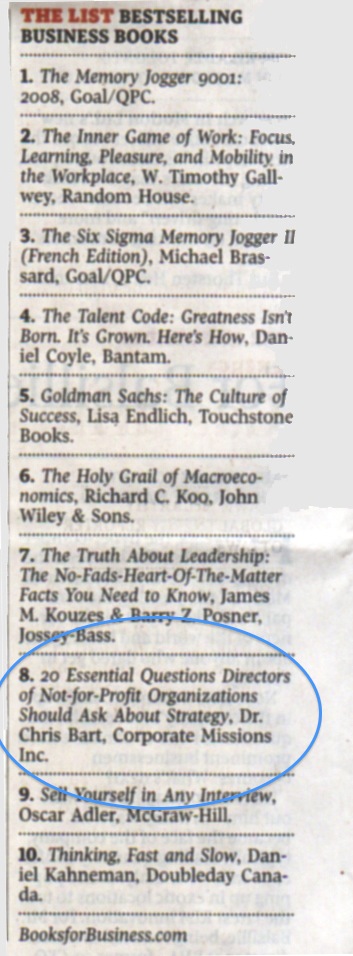For many organizations, controlling workplace and employee behaviour is by no means a new problem. Getting employees to behave in a manner which is consistent with and reinforces the goals and aspirations contained in the company mission statement (a core and cornerstone strategic document) is at best an ongoing challenge.
Indeed, the true test of any mission statement’s worth, and worthiness, lies in its ability to inspire, control and influence employee behaviour. It’s also the job of corporate and institutional leaders to make sure this happens.
While it is beyond the scope of today’s blog to delve into all of the activities required to become a mission driven organization (for that you have to read my 2011 Business Best Seller, A Tale of Two Employees and the person who wanted to lead them), I can however outline a few strategies wise leaders must consider when developing and implementing an effective, behaviour influencing mission statement:
Have a mission statement that addresses the needs of all key stakeholders (from the brass to the grass roots of the organization) Re-introduce employees to the mission statement on a regular basis (ensuring that they know it, understand it and are focused, and committed to it) Reinforce the mission through organizational structures, systems and procedures (this especially includes the recruitment, training and reward systems) Engage employees by allowing them to provide feedback and suggestions on what the mission statement means to them and how it can be improvedOnly by incorporating the above mentioned practices can a company ever expect their mission statement to have an effect on their employees. It’s that simple . . . really!! Failing to do so will result, I can assure you, in having a mission statement that is hardly worth the paper it is written on.
My closing thought:
For any corporation to successfully develop and implement a mission statement, it must possess a team of well-trained, engaged employees who are committed to upholding it. And what are the consequences of not being mission driven? Chaos, confusion and contempt. Just ask any failing organization.
